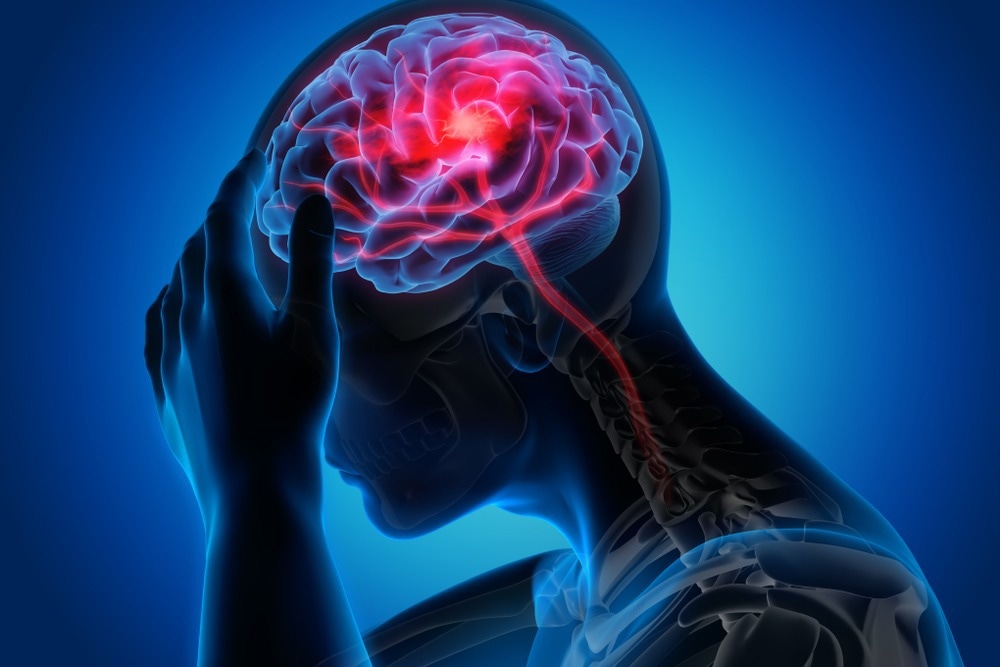A recent study in Scientific Reports indicates a positive correlation between elevated Dietary Inflammatory Index (DII) scores and increased parameters related to insulin resistance among American adult populations.
Dietary patterns and inflammation
Inflammation is a natural process that is triggered when the body is injured or infected and serves to heighten host protective responses and accelerate healing and recovery. However, when unable to achieve healing, it may become long-term.
Such chronic inflammation is known to trigger vascular damage in the form of endothelial dysfunction, increased platelet activation, and hypercoagulability. This eventually enhances the risk of stroke.
Earlier research has also shown a rise in acute inflammatory mediators while a stroke is occurring, allowing them to be used as biomarkers to predict the course of the stroke or the risk of complications.
The recognition that inflammation is at the heart of stroke led to the present study that explores the link between dietary causes of inflammation and the risk of stroke. It is crucial to prevent strokes as this condition is often difficult to treat, and recovery is limited, resulting in permanent disability or death.
Diets rich in molecules that stimulate inflammatory reactions are associated with rising levels of biomarkers of inflammation, including C3, C-reactive protein, tumor necrosis factor (TNF)-α, and interleukin-6 (IL-6). To decide if a diet is pro-inflammatory, scientists often use a tool called the Dietary Inflammatory Index (DII).
However, the association of the DII with stroke risk is unclear at present. Various studies have thrown up contradictory findings. This could be because of factors like insulin resistance (IR) that are caused by inflammatory diet patterns and enhance the stroke risk. Thus, IR could mediate the interaction of diet with stroke.
What were the findings?
The data came from the National Health and Nutrition Examination Survey (NHANES) from 2005 to 2018. The study was thus based on a large population sample.
The scientists found that the incidence of stroke was nearly 3.9% overall. Risk factors for stroke included being female, Black, less educated, drinkers, and a history of being diagnosed with or treated for hypertension, diabetes mellitus, or elevated blood lipid levels. Stroke patients also had higher mean age, body mass index, systolic blood pressure, insulin resistance, and blood sugar levels. However, their energy intake was lower, as was their diastolic blood pressure.
The same characteristics were linked to higher DII scores
DII scores were also higher among stroke patients, even after compensating for confounding factors. Compared to those with the lowest DII scores, the odds of having a stroke were nearly doubled among those in the third and fourth quartile of DII scores.
There was also an increasing trend in the odds of stroke occurrence with rising DII scores, reflecting a consistent dose-response relationship.
With increasing DII scores, there is an increase in IR-related indices as well. However, there is no observed interaction between HOMA-IR and DII scores when assessing stroke risk. HOMA-IR does not appear to multiply the effect of DII on stroke risk, nor does it mediate the effect of DII.
How does this correspond with prior studies?
Earlier research on DII has focused on cardiovascular disease (CVD) risk rather than stroke. For instance, the Ravansar Non-Communicable Disease (RaNCD) revealed a 40% increased risk of CVD with a more pro-inflammatory dietary pattern. Another study, the Supplémentation en VItamines et Minéraux AntioXydants (SU.VI.MAX), showed such a correlation for heart attacks but not other forms of CVD.
Others have pointed out the linear correlation of DII scores with CVD risk.
The current study looked only at stroke risk, which is one specific type of CVD. While reflecting the conclusions of some previous studies, this research uses a larger and more diverse sample, as well as attempts to use a more comprehensive form of analysis to ensure the results are more reliable.
The authors acknowledge the discordance with recent French and Australian studies that failed to show an association between DII scores and stroke risk. This could be due to the limited number of stroke patients, the variation in age and sex characteristics, and dietary and cultural norms across the different studies, they say.
The lack of interaction between DII and IR contradicts previous studies. This could be because the association is seen only after a certain DII score threshold. Alternatively, it may be observed only if quartiles rather than tertiles are used in DII analysis, as suggested by the researchers.
However, the study suggests that DII and IR may be independently associated with stroke risk. Further research may require the use of more dietary parameters to calculate the DII scores.
What are the conclusions?
The findings of this study demonstrate that among American adults, rising DII scores are correlated with increasing IR-related parameters. Irrespective of this, “an increase in DII was consistently associated with an increased risk of stroke.” This highlights the need to advise an anti-inflammatory diet as an effective strategy for stroke prevention.
Credit: Source link




